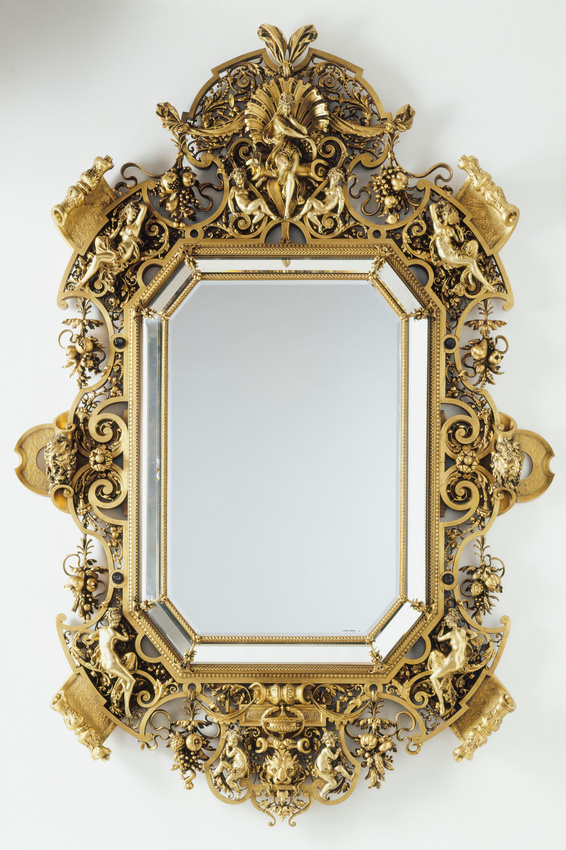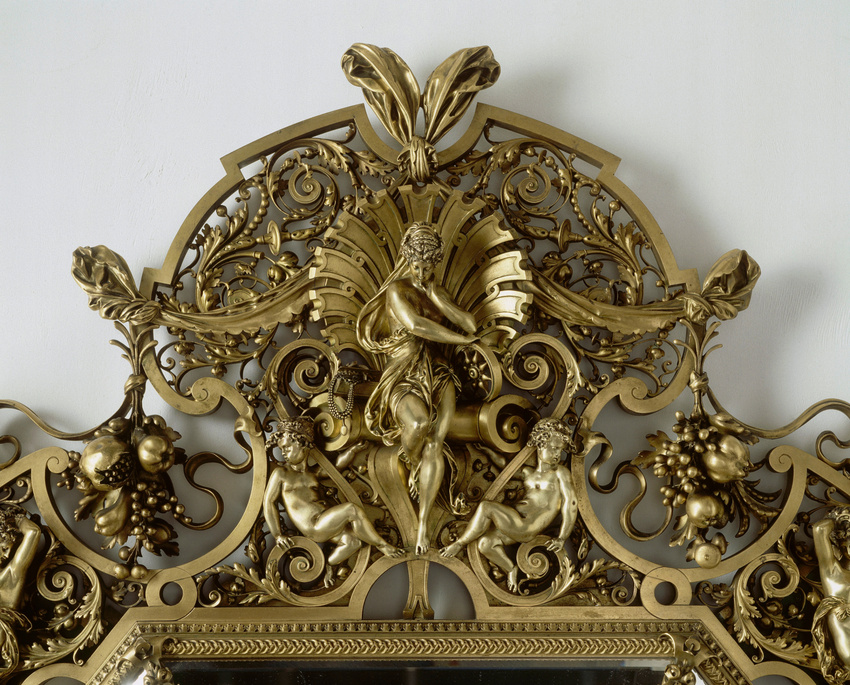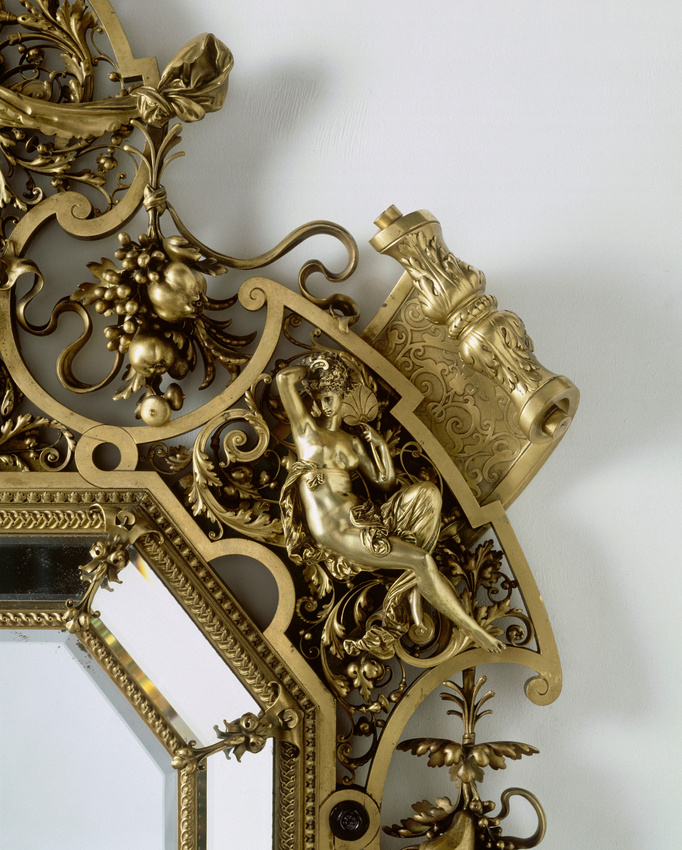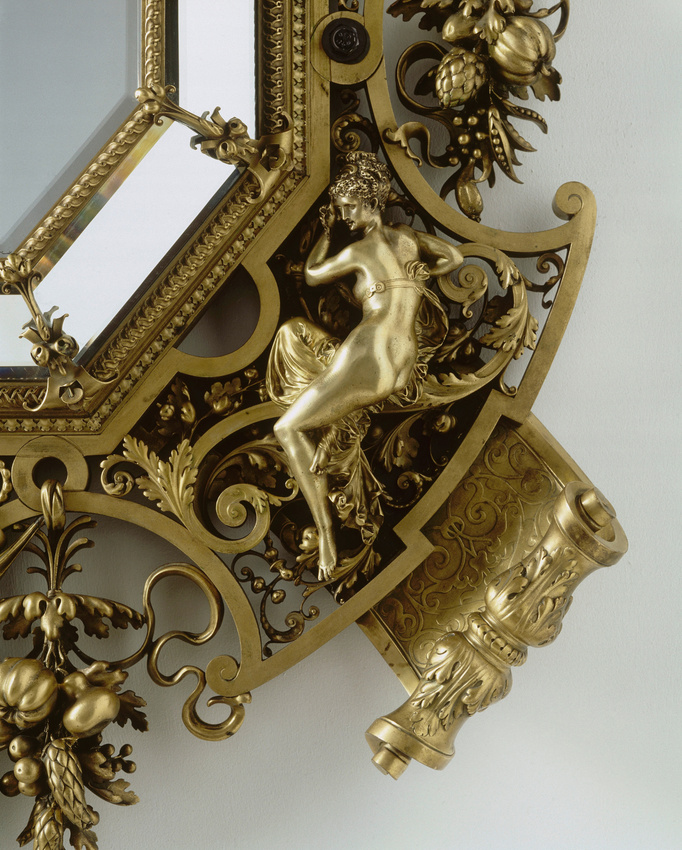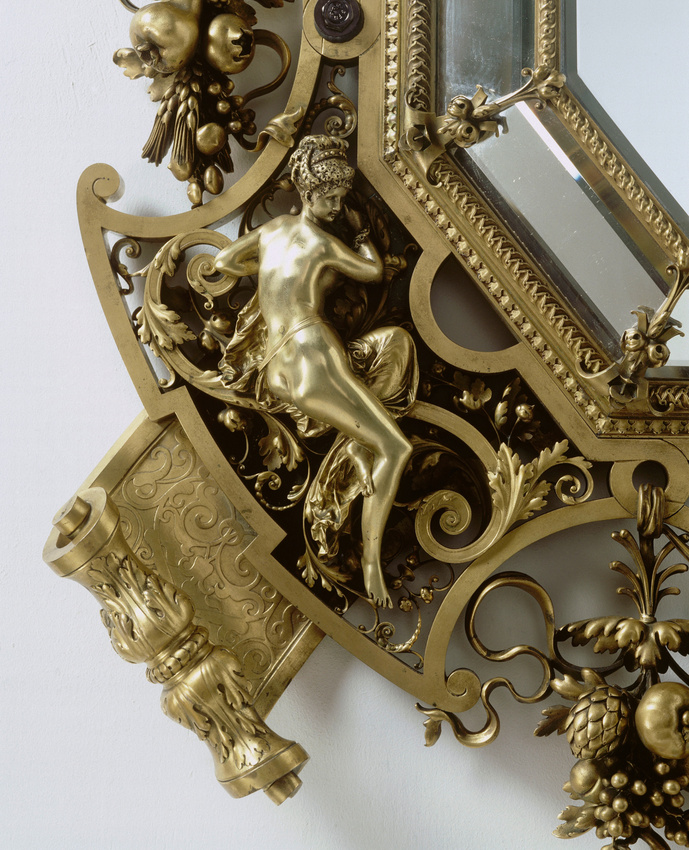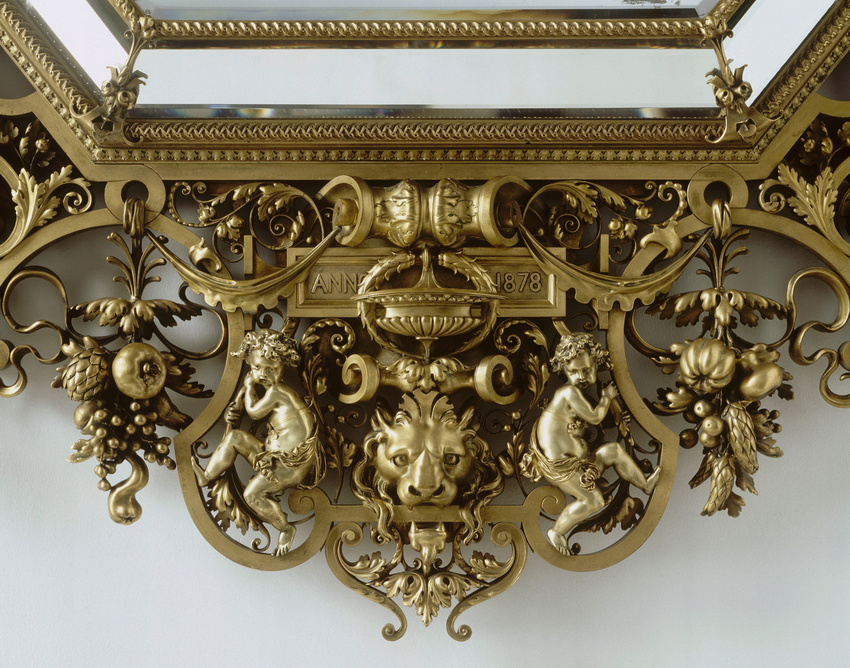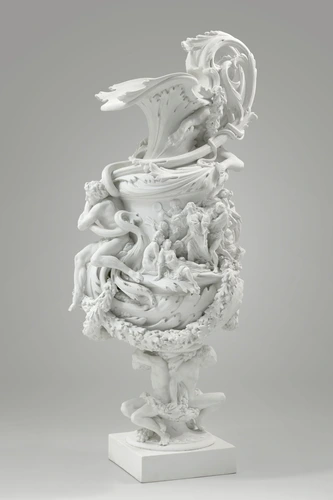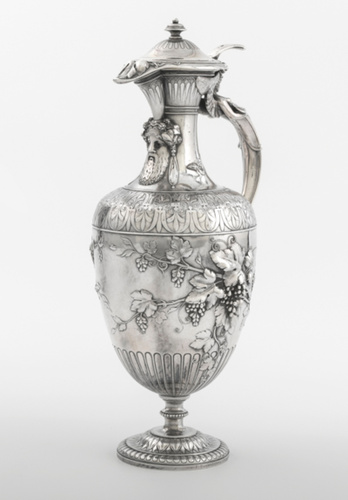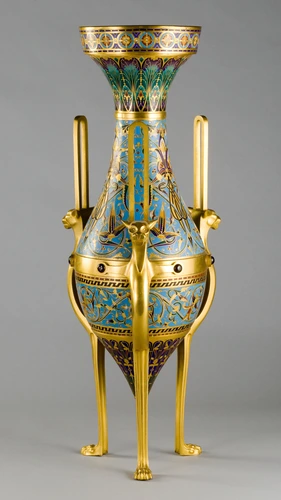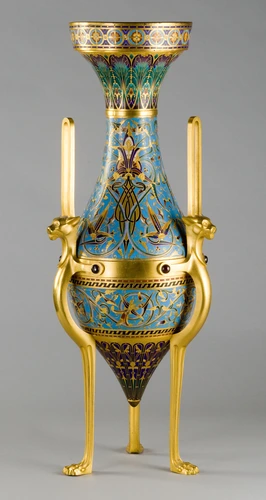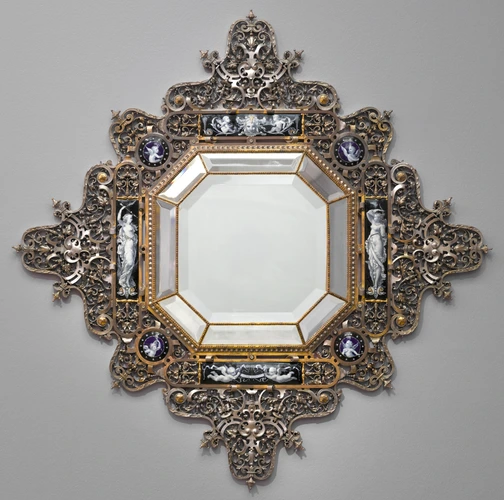Miroir monumental
It would be hard to imagine a more eloquent demonstration of the alliance of art and industry advocated during the Second Empire than this sumptuous mirror. The combined talents and virtuosity of the decorator, the sculptor, the bronze caster and the ornamentist have produced a masterpiece.
Three of the most prestigious names in the so-called 'industrial arts' of the second half of the nineteenth century worked on it: Ferdinand Barbedienne (1810-1892), the founder and director of the biggest art bronze foundry in Paris; Albert Ernest Carrier-Belleuse, an astonishingly prolific sculptor and decorator; Constant Sévin, a sculptor and ornamentist indissociable from Barbedienne's formidable success.
This monumental mirror was designed by Sévin and Carrier-Belleuse for Barbedienne's stand at the Universal Exhibition of 1867. The first version is now in the Bowes Museum at Barnard Castle. This second model, made in 1878, is entirely gilded and more finely chiselled.
Here, the ornamentist and bronzesmith of the Second Empire rivalled with the goldsmiths of past centuries. They brilliantly took up the tradition of great silver furniture made in Paris or Augsburg in the seventeenth and early eighteenth centuries. But the repertoire of ornaments used, Venuses and nymphs, cupids, mascarons, lion's muzzles, cascades of fruit, foliage and cut out leather is typical of the French Renaissance in the style of the Fontainebleau School.
